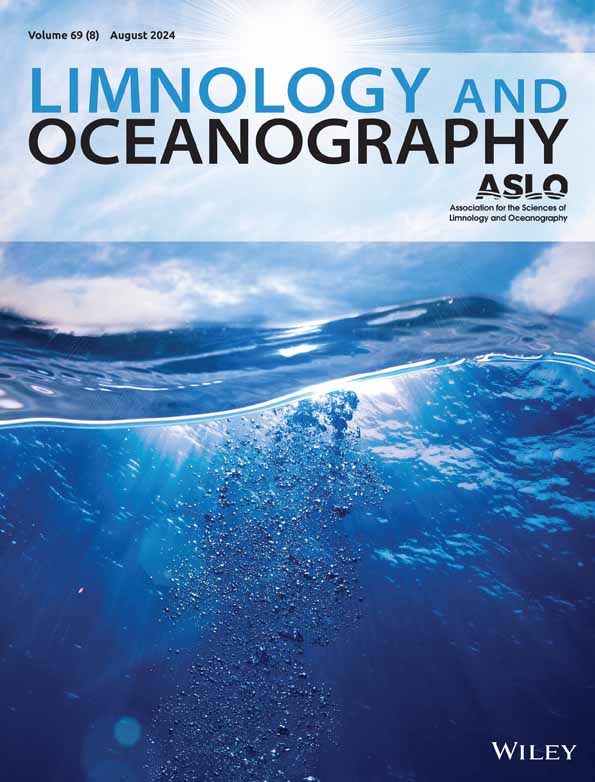Sea ice breakup and nutrient supply regulate the timing and magnitude of algal export over the slopes of the Pacific Arctic region
IF 3.8
1区 地球科学
Q1 LIMNOLOGY
引用次数: 0
Abstract
Few in situ measurements are conducted early in the productive season in the Arctic Ocean, making it difficult to accurately assess the impact of the recent decline in sea ice cover on algal fluxes. Since 2017, time‐series sediment traps have been deployed to collect sinking particles at two sites in the Pacific Arctic region. Here, we present algal fluxes obtained in the East Siberian Sea (ESS) and in the northern Chukchi Sea (NCS) between August 2017 and November 2022. Despite interruptions in sampling, algal fluxes reflected large spatial and temporal variations in the magnitude and timing of algal blooms and export in the region. In the ESS, peak diatom fluxes > 600 million cells m求助全文
约1分钟内获得全文
求助全文
来源期刊

Limnology and Oceanography
地学-海洋学
CiteScore
8.80
自引率
6.70%
发文量
254
审稿时长
3 months
期刊介绍:
Limnology and Oceanography (L&O; print ISSN 0024-3590, online ISSN 1939-5590) publishes original articles, including scholarly reviews, about all aspects of limnology and oceanography. The journal''s unifying theme is the understanding of aquatic systems. Submissions are judged on the originality of their data, interpretations, and ideas, and on the degree to which they can be generalized beyond the particular aquatic system examined. Laboratory and modeling studies must demonstrate relevance to field environments; typically this means that they are bolstered by substantial "real-world" data. Few purely theoretical or purely empirical papers are accepted for review.
 求助内容:
求助内容: 应助结果提醒方式:
应助结果提醒方式:


